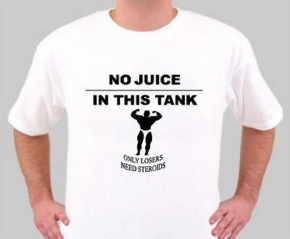DEA Official Testifies to U.S. Senate on Steroids and Health Supplements
DEA Official Testifies to U.S. Senate on Steroids and Health Supplements
SEP 29 – WASHINGTON, DC — DEA Assistant Administrator, Joseph T. Rannazzisi today testified in the Senate Judiciary Committee, Subcommittee on Crime and Drugs on the rising problem of illegal anabolic steroids and dietary supplements and other over-the-counter health products. The following is Mr. Rannazzisi’s statement to the Committee:
Written Statement of Joseph T. Rannazzisi, Deputy Assistant Administrator,
Office of Diversion Control
Drug Enforcement Administration
“Body Building Products and Hidden Steroids: Enforcement Barriers”
September 29, 2009
Subcommittee on Crime and Drugs
Judiciary Committee
United States Senate
Introduction
Chairman Specter, Ranking Member Graham, and distinguished Members of the Subcommittee, on behalf of Acting Administrator Michele Leonhart and the more than 9,400 men and women of the Drug Enforcement Administration, I want to thank you for the opportunity to appear before you today and testify in this hearing, “Body Building Products and Hidden Steroids: Enforcement Barriers.
Background
To understand the use of steroid products for body building and performance enhancement, we must start by discussing testosterone. Testosterone is a hormone that is produced in the body and primarily responsible for the development and maintenance of male sexual characteristics (androgenic effects) and the promotion of muscle growth (anabolic effects). Testosterone was first synthesized in the 1930s and was subsequently utilized by bodybuilders, weight lifters, and amateur and professional athletes to perfect body appearance, increase physical performance, and gain muscle size and mass. In short, testosterone is used for performance enhancement, that is, to get bigger, stronger and faster. In addition to professional and amateur sports figures, we are now seeing law enforcement and public safety officials using these substances as well.
Testosterone has very limited effectiveness as an oral medication since it is rapidly broken down in the liver. It is generally given by inter-muscular injection, however, creams or gels have also been used as a delivery system to take advantage of absorption through the skin, avoiding the liver and subsequent breakdown of the drug.
Over time, scientists developed and synthesized compounds or derivatives that were structurally similar to testosterone (“designer steroids”) and prohormones or precursors, inactive or minimally active compounds that, when ingested, metabolize into an active anabolic steroid.
An example would be androstenedione (“andro”), a moderately active steroid that, when ingested, metabolizes into testosterone. Androstenedione was sold over the Internet and in health food and nutrition stores as a dietary supplement until 2004, when FDA sent warning letters to 23 companies asking them to cease distribution of the product or risk enforcement action. The FDA took this action because it believed that the use of supplements containing androstenedione would increase the risk of serious health problems. Many, if not all of the testosterone “boosters”, testosterone derivative compounds, and steroid prohormones/precursors on the market today are sold as dietary supplements.
In 1990, Congress passed the Anabolic Steroids Control Act of 1990, which placed 27 anabolic steroids into schedule III of the Controlled Substances Act. By virtue of placement in schedule III, the law increased penalties for steroid trafficking and imposed strict production and record keeping requirements on pharmaceutical firms. In 2004, Congress passed the Anabolic Steroid Control Act of 2004, which placed an additional 36 steroids and over-the-counter prohormone dietary supplements into schedule III of the Controlled Substances Act, including androstenedione and its derivatives.
Dietary Supplements and Designer Steroids
Dietary supplements are regulated by HHS’s Food and Drug Administration (FDA) under amendments to the Federal Food, Drug, and Cosmetic Act (FDC Act) added by the Dietary Supplement Health and Education Act (DSHEA) which was enacted in 1994. (For convenience, this testimony will refer to those FDC Act provisions as “DSHEA”.) Under DSHEA, the manufacturer is responsible for ensuring that their products are safe and properly labeled prior to marketing. If a product containing a steroid or steroid precursor meets the definition of a dietary supplement, FDA must show that the product is adulterated (e.g., because it presents a significant or unreasonable risk of illness or injury) before the supplement can be removed from the market. However, if the product meets the definition of a drug, FDA need not show that the product is unsafe or otherwise adulterated to take enforcement action against it. The Drug Enforcement Administration does not have statutory authority to enforce provisions of DSHEA and has very limited authority to enforce other provisions within the FDC Act.
Although DEA does not have statutory authority to enforce DSHEA, DEA does have statutory authority to investigate incidents involving the illegal manufacture and distribution of anabolic adrenergic steroids in the dietary supplement market. DEA also is involved to the extent that it can administratively schedule a substance that is chemically and pharmacologically related to testosterone and that is used in dietary supplements. Additionally, DEA has the authority and responsibility to investigate companies that are marketing products as dietary supplements that are adulterated with controlled substances.
Administrative Scheduling
1 See 21 U.S.C. 333. DEA has authority under the FDCA to investigate the illegal distribution of human growth hormone, a non-controlled legend drug. With the passage of the Anabolic Steroid Control Act of 2004, Congress refined the definition in the original 1990 law (21 U.S.C. 802(41)(A)) to allow DEA to administratively classify additional steroids as schedule III anabolic steroids. The statute defines an anabolic steroid as a substance that is both chemically and pharmacologically related to testosterone; is not an estrogen, progestin or corticosteroid; and is not dihydroepiandrosterone (DHEA). Using this provision, DEA identifies substances marketed as anabolic products in the dietary supplement market and then conducts a chemical and pharmacologic analysis of the substance to determine if it is related to testosterone, conducts a comprehensive review of existing peer reviewed scientific literature and if necessary, conducts additional pharmacologic testing to ultimately determine if the substance meets the criteria for a schedule III anabolic steroid. The scheduling process requires an interagency review, the publication of a Notice of Proposed Rulemaking, a review of public comments, and the publication of a Final Rule in the Federal Register that provides notice to the public and industry that the substance will be designated as a schedule III anabolic steroid. This process is conducted in accordance with the Administrative Procedures Act and takes many months to complete. There is no method, under the current statute, to expedite the scheduling process.
DEA has uncovered several products that we are currently evaluating for scheduling. These products were being sold and marketed as anabolic substances in the dietary supplement market and were found to be chemically and pharmacologically similar to testosterone. DEA is in the final stages of the scheduling process for three (3) of these substances, identified as boldione, desoxymethyltestosterone, and 19-nor-4,9(10)- androstadienedione. As of August 2008, DEA was aware of 58 dietary supplements purportedly containing one or more of these three steroids. The initial Notice of Proposed Rulemaking concerning the scheduling of these substances was published in April of 2008. We anticipate publishing the Final Rule within the next several months. If finalized as proposed, these products would be the first three substances scheduled under the 2004 Anabolic Steroid Control Act. As you can see, the overall time period to perform an anabolic steroid scheduling action may take as long as two years to complete.
DEA is reviewing three other substances identified as methyldrostanolone, prostanozol, and adrenostreone. All three are found in the dietary supplement market and two of these products are believed to be more potent than testosterone. So, in the time that it takes DEA to administratively schedule an anabolic steroid used in a dietary supplement product, several new products can enter the market to take the place of those products that have completed the lengthy administrative process. Chemists continue to create new derivative products by substituting and altering the testosterone molecule and then market them as “dietary supplements”. Often, these new formulations have never been clinically tested and any adverse reactions in humans are simply unknown. In some instances these products have been linked to serious liver damage or other health issues.
Dietary Supplements Containing Controlled Substances
Recently, DEA has identified products in the dietary supplement market that contain small amounts of schedule III anabolic steroids. The presence of these anabolic steroids was not listed on the label of specific products and the consumer was not aware that the substance that he or she had purchased from the local nutrition shop contained a controlled anabolic steroid. Analyses of some dietary supplements by DEA labs as well as independent analytical labs have identified controlled anabolic steroids in products purchased directly from the local nutrition shop. The companies manufacturing, bottling and marketing these products do not hold controlled substance registrations and the manufacture and distribution of these products violate various provisions of the Controlled Substances Act. It is not unusual for some dietary supplements products to contain controlled anabolic steroids in one batch and not the next.
These are often referred to as “hot” batches in the industry. The intent is to stir public interest in a product that is marketed by word of mouth or on blogs across the Internet. These products may contain subpotent or superpotent levels of controlled anabolic steroids. In these instances consumers are completely unaware of the actual contents of the products they are purchasing. An analysis of more than 600 dietary supplements revealed that approximately 15% contained anabolic steroids.2 Two-hundred and forty of these supplements were from the United States with 18.8% containing undeclared anabolic steroids.
Adverse Effects of Anabolic Steroids
The use of anabolic steroids or dietary supplements that contain anabolic steroids or designer steroids, in high doses that boost, alter or derive from testosterone may trigger numerous adverse health effects in the human body including liver toxicity, baldness, uncontrolled rage, and heart attacks. Long-term, large dose usage of anabolic-androgenic steroids (AAS) has been shown to result in dependence associated with acute withdrawal syndrome to include depressed mood, fatigue, anorexia, and insomnia. The abuse of AAS also causes abusers to become dependant on multiple drugs.3 For example: use of sedatives as a sleep aid, narcotic use to decrease pain, use of anti-depressants for mood swings, and amphetamine use to increase endurance and burn fat.
The use/abuse of steroids by adolescences also is a cause of concern. In 1993, Yesalis et al reported that 80% of 12-17 year olds who had used steroids at least once in their lives had committed acts of violence or crimes against property within the past year, a rate more than twice that of those not having taken anabolic steroids. An Internet survey of 500 AAS users 2 Geyer, H; Parr, M.,K.; Mareck, U.; Reinhart, U.; Schrader, Y.; Schanzer, W. International Journal of Sports Medicine 2004, pp. 124-129: Analysis of Non-Hormonal Nutritional Supplements for Anabolic-Androgenic Steroids-Results of an International Study . 3 Skarberg, K.; Nyberg, F.; Engstrom, I. Eur Addict Res 2009, 15 (2), 99-106, Multisubstance Use as a Feature of Addition to Anabolic-Androgenic steroids . revealed that 26% of the respondents started use during their teenage years with 95% reporting poly-drug use. 4
Conclusion
DEA is committed to protecting the health and welfare of the American people. DEA continues to investigate and uncover dietary supplement products that contain either controlled anabolic steroids or designer steroids that are structurally similar to testosterone. Once found, DEA then initiates a scientific review and analysis followed by any appropriate administrative scheduling process. However, unscrupulous chemists take advantage of this lengthy administrative scheduling process. They continue to create and market products that contain chemicals which have never been adequately tested on humans and by the time government agencies become aware of adverse effects it is often too late as the damage has already been done.






